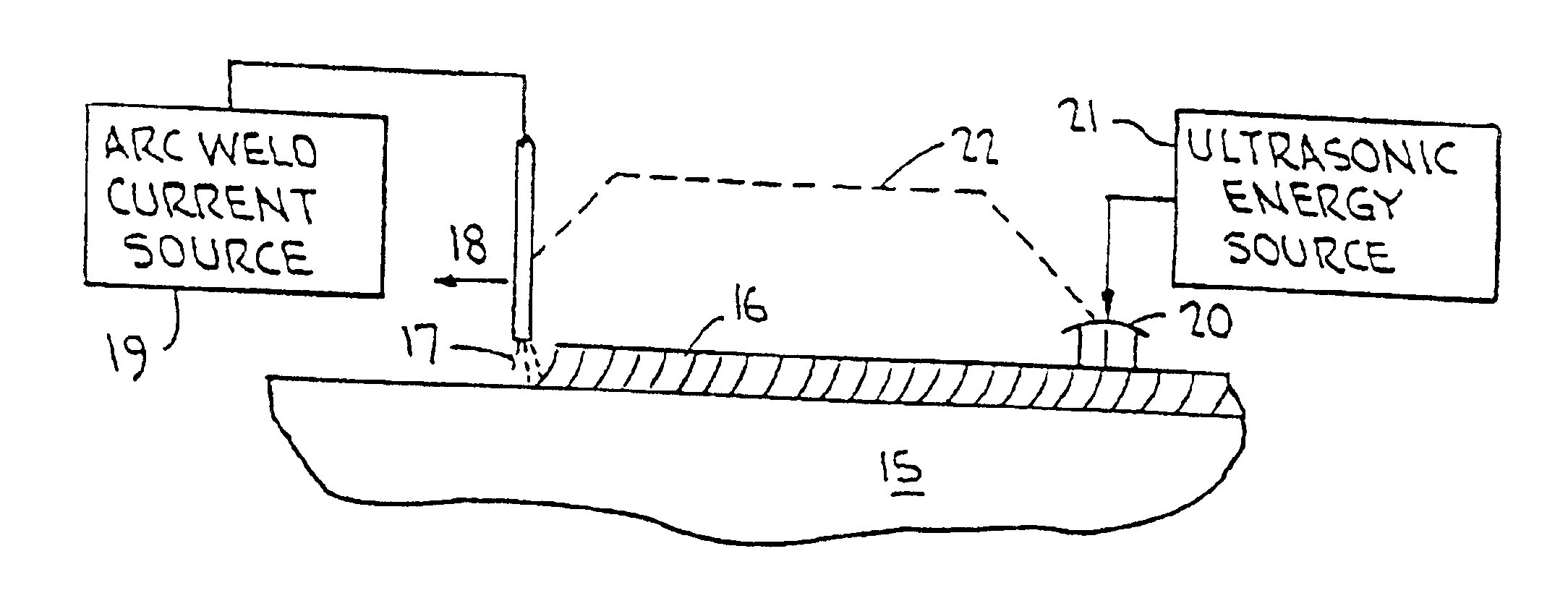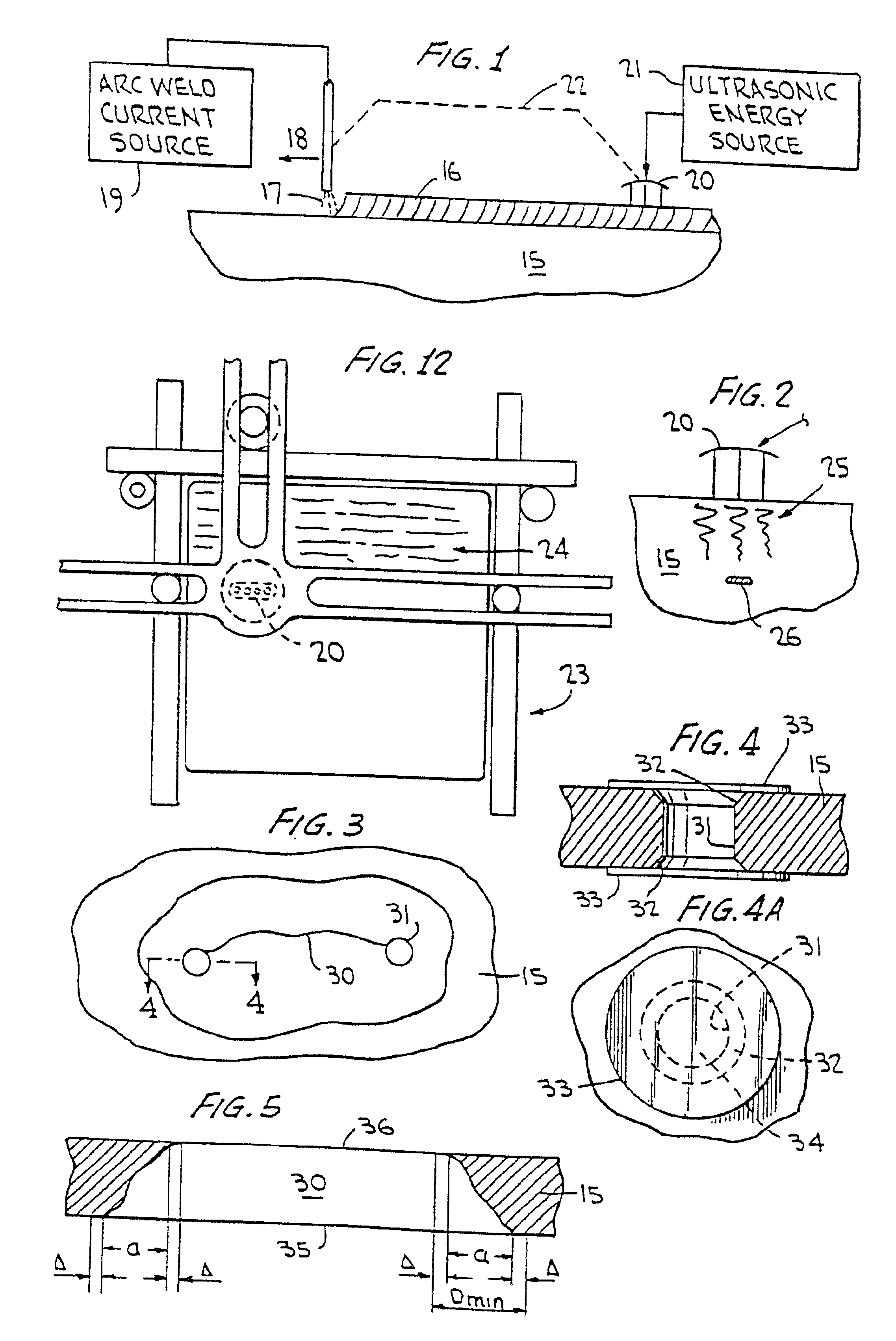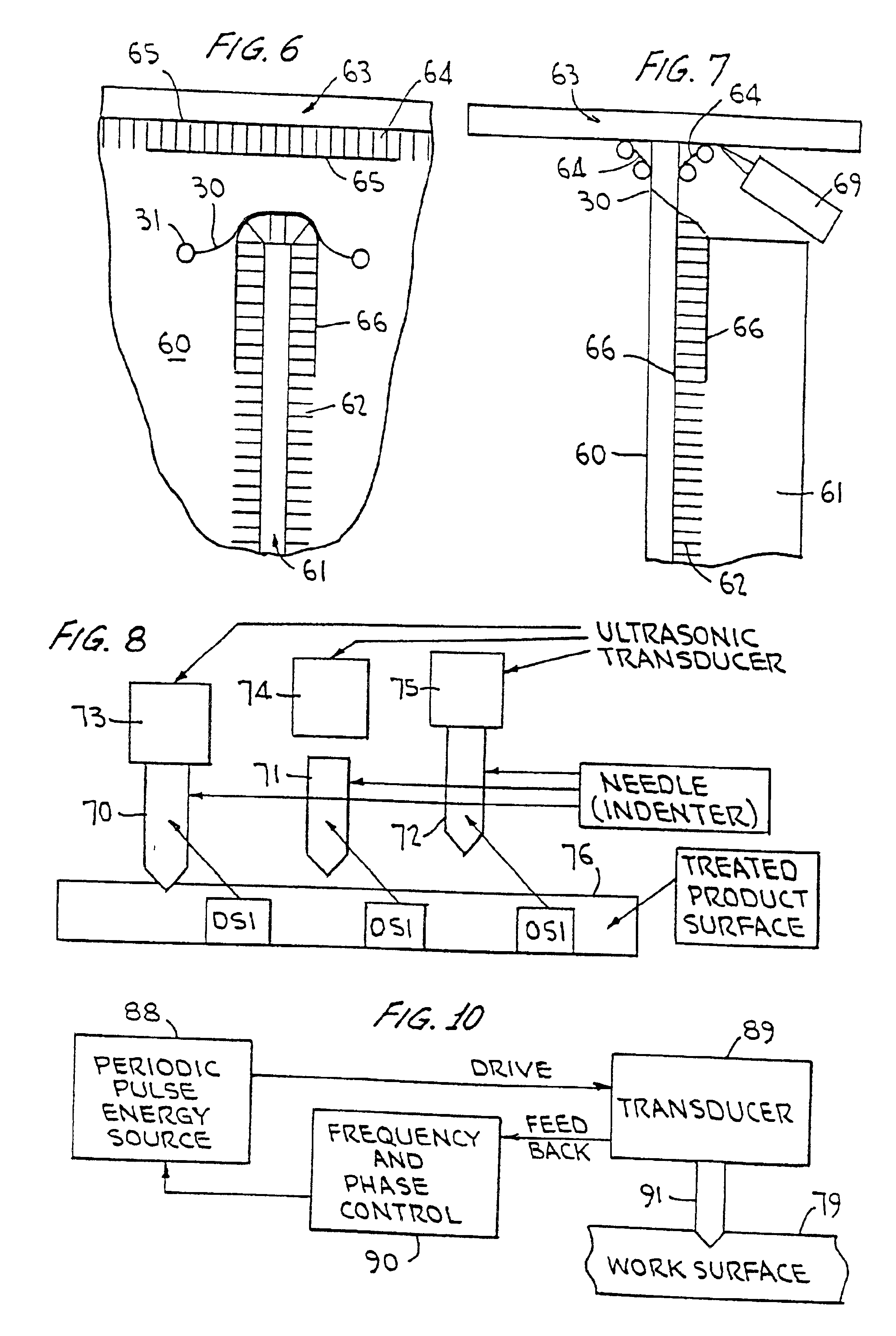Ultrasonic impact methods for treatment of welded structures
a technology of ultrasonic impact and welded structure, which is applied in the direction of heat treatment furnaces, heat treatment apparatus, furnaces, etc., can solve the problems of deterioration of load bearing strength in the product structure, detecting defective, and compromising product quality inconsistent with expected and desired performance, so as to improve the corrosion fatigue strength and durability of the load bearing surface.
- Summary
- Abstract
- Description
- Claims
- Application Information
AI Technical Summary
Benefits of technology
Problems solved by technology
Method used
Image
Examples
Embodiment Construction
In FIG. 1 it is seen that a weld seam 16 is being laid down on the welded product body 15 surface at the representative welding arc 17, which is moving to the left as indicated by arrow 18. Appropriate arc energy is derived from the current source 19 for this welding embodiment. In accordance with this invention, an ultrasonic transducer head 20, powered from the ultrasonic energy source 21 is moved along the weld seam 16 in tandem with the arc in direction 18, as indicated by the dotted line 22.
As seen from the surface scanning universal positioning mechanism jig tool 23 of FIG. 12, the ultrasonic transducer head 20 may be manually or automatically moved in a desired scanning pattern 24 over the exterior body surface, such as by use of an intermediate pantograph following a predetermined scanning pattern or an automated machine tool program producing step by step movement along a specified path (not shown). The transducer may have multiple head structure 20, as depicted, or other f...
PUM
| Property | Measurement | Unit |
|---|---|---|
| Strength | aaaaa | aaaaa |
| Frequency | aaaaa | aaaaa |
| Energy | aaaaa | aaaaa |
Abstract
Description
Claims
Application Information
 Login to View More
Login to View More - R&D
- Intellectual Property
- Life Sciences
- Materials
- Tech Scout
- Unparalleled Data Quality
- Higher Quality Content
- 60% Fewer Hallucinations
Browse by: Latest US Patents, China's latest patents, Technical Efficacy Thesaurus, Application Domain, Technology Topic, Popular Technical Reports.
© 2025 PatSnap. All rights reserved.Legal|Privacy policy|Modern Slavery Act Transparency Statement|Sitemap|About US| Contact US: help@patsnap.com



